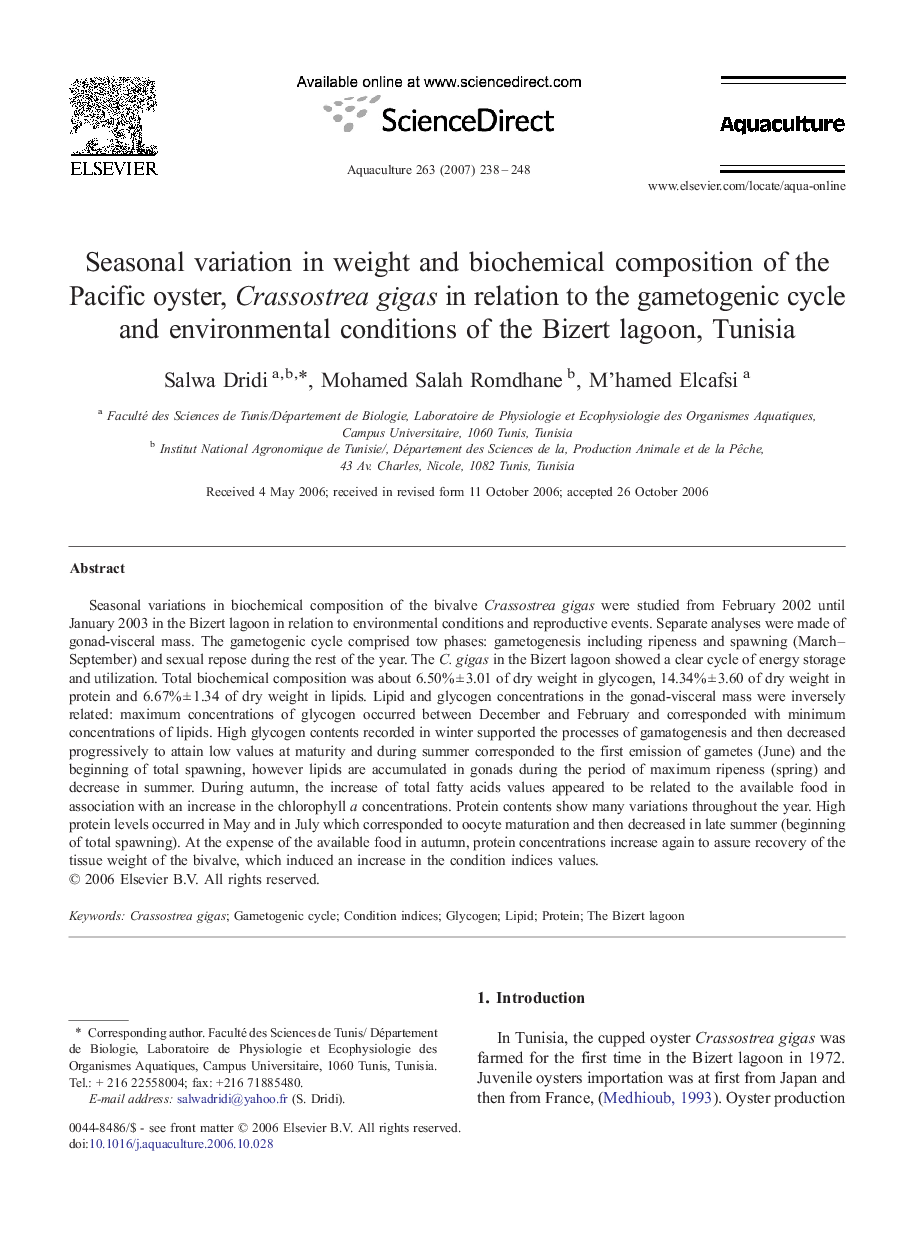| Article ID | Journal | Published Year | Pages | File Type |
|---|---|---|---|---|
| 2425563 | Aquaculture | 2007 | 11 Pages |
Seasonal variations in biochemical composition of the bivalve Crassostrea gigas were studied from February 2002 until January 2003 in the Bizert lagoon in relation to environmental conditions and reproductive events. Separate analyses were made of gonad-visceral mass. The gametogenic cycle comprised tow phases: gametogenesis including ripeness and spawning (March–September) and sexual repose during the rest of the year. The C. gigas in the Bizert lagoon showed a clear cycle of energy storage and utilization. Total biochemical composition was about 6.50% ± 3.01 of dry weight in glycogen, 14.34% ± 3.60 of dry weight in protein and 6.67% ± 1.34 of dry weight in lipids. Lipid and glycogen concentrations in the gonad-visceral mass were inversely related: maximum concentrations of glycogen occurred between December and February and corresponded with minimum concentrations of lipids. High glycogen contents recorded in winter supported the processes of gamatogenesis and then decreased progressively to attain low values at maturity and during summer corresponded to the first emission of gametes (June) and the beginning of total spawning, however lipids are accumulated in gonads during the period of maximum ripeness (spring) and decrease in summer. During autumn, the increase of total fatty acids values appeared to be related to the available food in association with an increase in the chlorophyll a concentrations. Protein contents show many variations throughout the year. High protein levels occurred in May and in July which corresponded to oocyte maturation and then decreased in late summer (beginning of total spawning). At the expense of the available food in autumn, protein concentrations increase again to assure recovery of the tissue weight of the bivalve, which induced an increase in the condition indices values.
